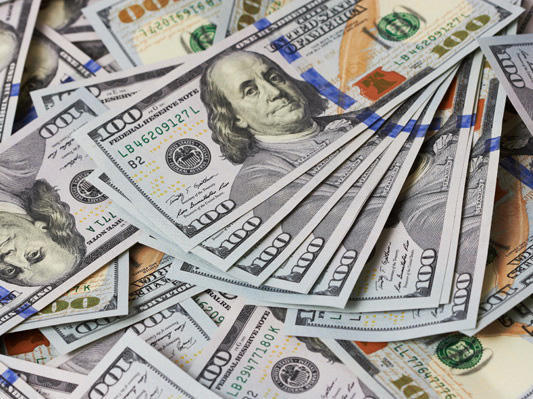Dollar falls as oil price gain boosts commodity currencies

The U.S. dollar fell against a basket of currencies and slid against the euro on Wednesday in thin holiday trading, while a rally in commodity prices helped push the Canadian and Australian currencies to their highest levels in recent weeks, Reuters reports.
Traders said there was little news to support the euro’s rise, but some investors have positioned for a possible strengthening into the new year. In 2017 the euro had its best year against the greenback since 2003.
Sterling enjoyed a bounce amid the broad dollar decline, with the pound up 0.3 percent at $1.341 GBP=D3 at 1235 GMT. It had traded as high as $1.3423 earlier on Wednesday, its highest since Dec. 15.
Oil prices surged to two and a half-year highs on Tuesday, boosted by news of an explosion on a Libyan crude pipeline as well as voluntary OPEC-led supply cuts. Copper prices on Wednesday rocketed to their highest in three and a half years.
That helped support demand for the currencies of commodity exporting countries, with the Canadian dollar touching C$1.2628 CAD=D3, close to its highest level since October.
The Australian dollar AUD=D3 rose 0.6 percent to $0.7776, its highest level in two months.
The U.S. dollar, measured against a basket of major currencies, was down 0.25 percent .DXY.
The U.S. dollar was also down 0.3 percent versus the euro at $1.1897 EUR=EBS.
“There are very few events to drive anything today,” said Christin Tuxen, an FX strategist at Danske Bank, adding that the passage of the U.S. government’s landmark tax reform last week was not helping the dollar. “For most people it’s not going to be this dollar-supportive event.”
Tuxen said euro-U.S. dollar trading in December had been driven by volatility in Euro/dollar cross-currency basis swaps, which widened significantly earlier this month as demand for dollars jumped.
Monetary policy convergence could weigh on the dollar next year, now that central banks other than the U.S. Federal Reserve have either begun moving away from monetary stimulus, or started to raise interest rates, said Peter Chia, FX strategist for United Overseas Bank in Singapore.
Against this backdrop, Japanese policymakers may at least start dropping more hints about an eventual tightening of the Bank of Japan’s monetary policy, Chia said, adding that the dollar could slip to 108 yen by the end of March.
“I think that policymakers in Japan want to prepare markets way ahead for some policy change ... The signaling process could be on a higher intensity next year,” he said, adding that actual BOJ policy-tightening might occur only in 2019.
The dollar held steady against the yen at 113.22 yen. JPY=
Bitcoin rose marginally to about $15,854 BTC=BTSP on the Luxembourg-based Bitstamp exchange, putting it about 14 percent up this week, after last week suffering its biggest weekly drop since 2013.
---
Follow us on Twitter @AzerNewsAz
Here we are to serve you with news right now. It does not cost much, but worth your attention.
Choose to support open, independent, quality journalism and subscribe on a monthly basis.
By subscribing to our online newspaper, you can have full digital access to all news, analysis, and much more.
You can also follow AzerNEWS on Twitter @AzerNewsAz or Facebook @AzerNewsNewspaper
Thank you!
